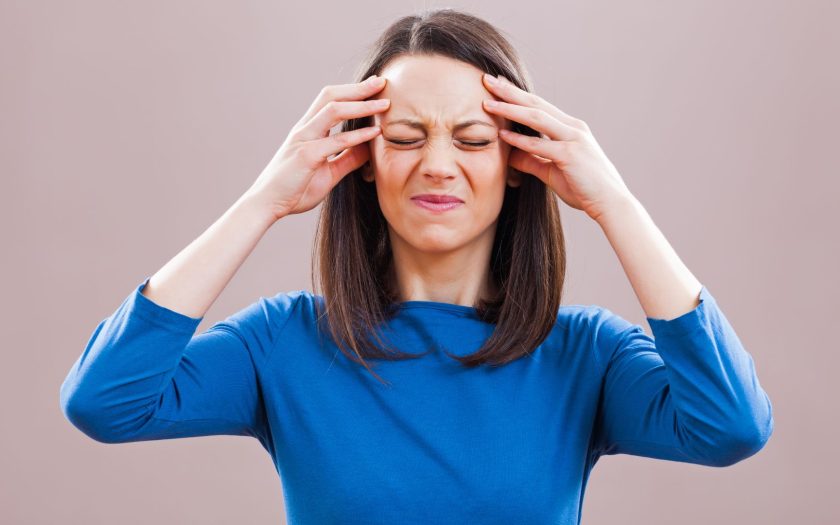Sudden vessel dilation.
When the air temperature rises, the body tries to cool itself naturally by expanding peripheral blood vessels. This helps release excess heat but also places additional strain on the cardiovascular system. As a result, intracranial pressure may fluctuate, leading to a pulsating or pressing pain in the temples, back of the head, or forehead. Common accompanying symptoms include fatigue, irritability, and dizziness. People with vegetative-vascular dystonia, hypertension, or a tendency toward migraines are especially sensitive to these changes. For example, if you’re standing in line under the scorching sun or walking around the city in + 86 °F (30°C) heat, you may begin to feel a throbbing sensation in your head, as if your heart is pounding in your temples. This is a typical heat-induced headache caused by a vascular reaction. To prevent this, avoid prolonged sun exposure, wear a hat, stay hydrated, and seek shade or air-conditioned spaces when possible. If the headache persists, it may be appropriate to take pain relievers (such as Brufen) to help stabilize your condition. In the case of migraines, it is important to use the specific medications prescribed by your doctor to relieve pain (for example, Suminat or Cafergot).
Overusing gadgets in direct sunlight.
Smartphones, tablets, and laptops have become an integral part of daily life, but using them outdoors in summer can negatively affect your well-being. In bright sunlight, you may find yourself straining your eyes to see the screen, as glare and low contrast force you to change the angle of your head and lean towards the device. This eye muscle strain can cause a sharp or dull headache within just 15–20 minutes, especially around the forehead, eyes, or the back of the head. This is compounded by the fact that the device overheats and generates additional heat. For example, holding a phone or tablet close to your face or holding a hot laptop on your lap for a long time creates localized overheating, which further affects your health. That’s why, in hot weather, it’s best to limit gadget use in direct sunlight, wear sunglasses, and, ideally, use electronic devices indoors.
Hormonal fluctuations.
During hot weather, hormonal shifts can become an invisible but very noticeable trigger for headaches — especially in women. Since high temperatures affect overall hormonal balance, disrupt the body’s electrolyte levels, and may worsen symptoms associated with PMS, ovulation, or menopause. Sudden changes in estrogen and progesterone levels may cause vascular spasms, which result in a throbbing or dull headache often accompanied by fatigue, mood swings, and drowsiness. For example, in the days leading up to menstruation, sensitivity to heat and dehydration increases, making the body more vulnerable to headaches even after short exposure to the sun. Therefore, if you’re prone to such bodily reactions, try to spend as much time as possible in cool environments during hot weather — this can help you avoid discomfort and prevent your condition from worsening.
Strong scents (perfume, sweat, car air fresheners).
In hot weather, strong odors become much more intense — and this is a common but often underestimated cause of headaches. Perfumes, sweat, car air fresheners, cleaning products, or even the smell of hot asphalt can irritate the nasal mucosa, trigger a vascular response, and lead to headaches. In the heat, skin pores open more, scents evaporate faster, and spread more quickly. People with heightened sensitivity to smells or those prone to migraines are particularly affected. For example, riding an elevator with someone wearing heavy perfume or sitting in a car with a strong air freshener can lead to nausea, temple pressure, or a sharp headache within minutes. On hot days, it’s best to opt for safe, hypoallergenic personal care products, ventilate indoor spaces, and avoid staying too long in areas with overpowering odors.
Overconsumption of cold drinks or ice cream.
Excessive consumption of cold drinks or ice cream in the heat can trigger a sudden, sharp headache. This happens when something very cold quickly touches the roof of the mouth or the back of the throat. In response, blood vessels in that area rapidly constrict and then dilate — sending pain signals to the brain. This type of headache usually affects the forehead or the area between the eyes, comes on suddenly, and lasts only a few seconds to a minute. However, it can be so intense that it completely throws you off balance. To prevent this, consume cold foods and drinks slowly, let them warm slightly in your mouth before swallowing, and avoid overcooling the mucous membranes right after being in the heat.

